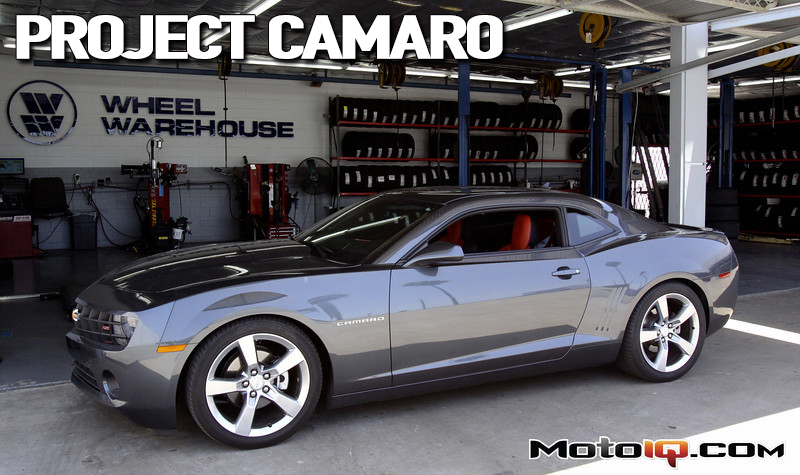
Project Camaro Part 1 – Improving Handling with KW Suspension & Whitelinewith some Help from Wheel Warehouse!
By Merrit Johnson
When the Chevrolet Camaro was re-introduced into the sports car market it came as no surprise that the industry quickly became saturated with part upgrades for the new model. The upgraded Chevrolet Camaro had available options to satisfy all the muscle car enthusiasts, such as a 6.2L LS3 V8 engine and an aggressive appearance. However, it also exemplified the influence of European and Japanese automobiles in the performance market as it was given independent rear suspension rather than the solid rear axle of old. Advances in engine technology also meant that opting for the 3.6L V6 SIDI engine for economy did not demote the vehicle from being considered in the sports car category.
 |
| To rid our Camaro of its undulating tendencies we took it to our good friends at Wheel Warehouse in Anaheim, CA. We brought with us our favorite street car staple, a set of KW Variant III multi-way adjustable coilovers. Then since suspension duties extend beyond just dampers and springs, we also sourced the full breadth of Camaro product offerings from Whiteline. |
 |
| KW suspension is tested to DIN 50021 SS for corrosion performance. The standard is German, but is very similar to ASTM B117, which might be more familiar to some folks. It is a salt fog test that requires a component to withstand over 480 hours of salt solution exposure before any sign of red rust. Many fasteners are targeted to this specification. The best materials will significantly exceed this test in performance. KW's stainless steel shock bodies, stainless reinforced engineering plastic spring seats, and OEM or better quality components are all part of the reasons for being able to pass this stringent standard. It also gives KW the confidence to offer a limited lifetime warranty. |
 |
| The attention to detail in KW Variant III product design is the reason it’s one of our favorite products for street performance. Many aftermarket coilover manufacturers cheap out on quality materials that cannot withstand vehicle environmental conditions such as heat exposure, fluid compatibility and corrosion resistance. For performance use, the KW Variant III is independently adjustable for damping in both compression and rebound. This gives it tons of flexibility when dialing in ride and response, great for a car that's end use is both daily driving and track use. The short bodied rear shocks use remote accumulators to allow the reduction of overall length and to reduce cavitation noise. |
 |
| KW coilovers offer design solutions with more robust materials for bump stops and dust protection, along with helper springs and perch designs to reduce noise transfer to the vehicle. The features are welcome comfort additions for the street driving consumer and are well worth the additional cost they may add to the system. In this case, upgrading suspension components does not mean that one must accept an inherent increase in excessive squeak and clunk noises transferred to the passenger cabin. The V3 also has mounts for brake lines and wheel speed sensors. |



1 comment
Is there any more development on this project?